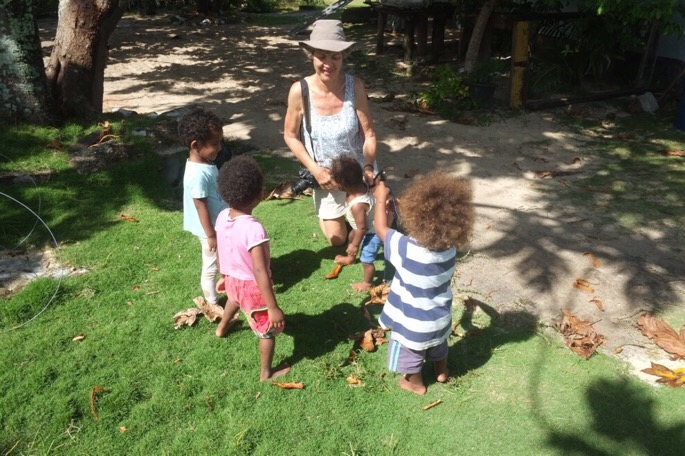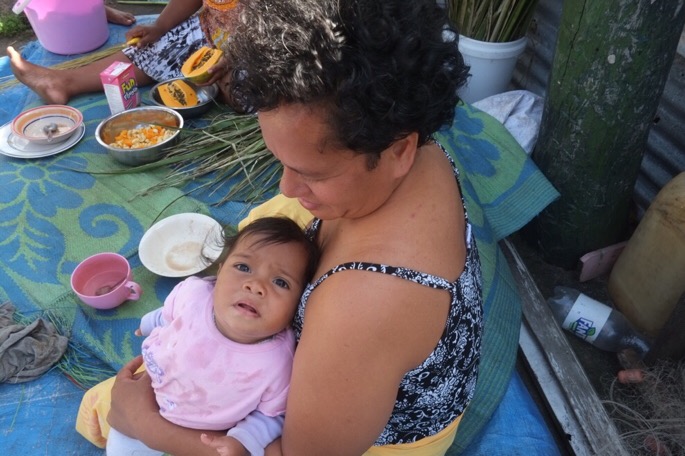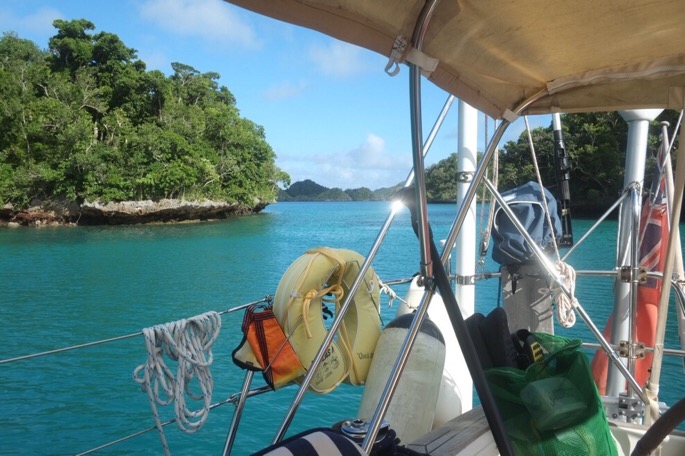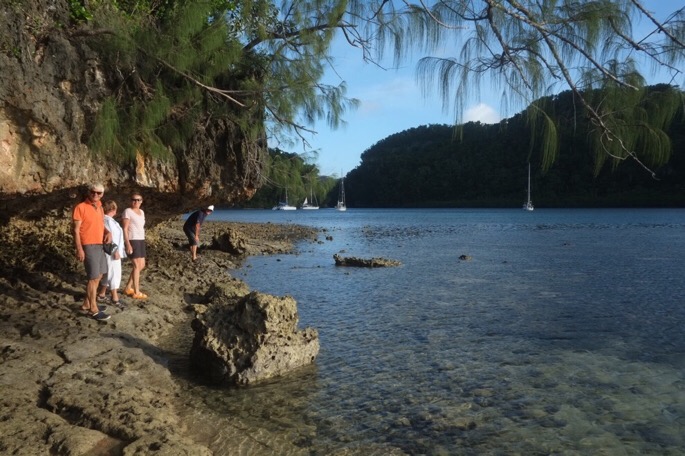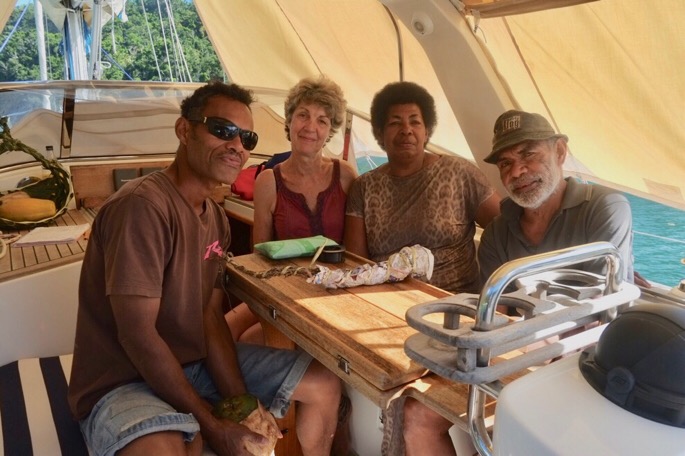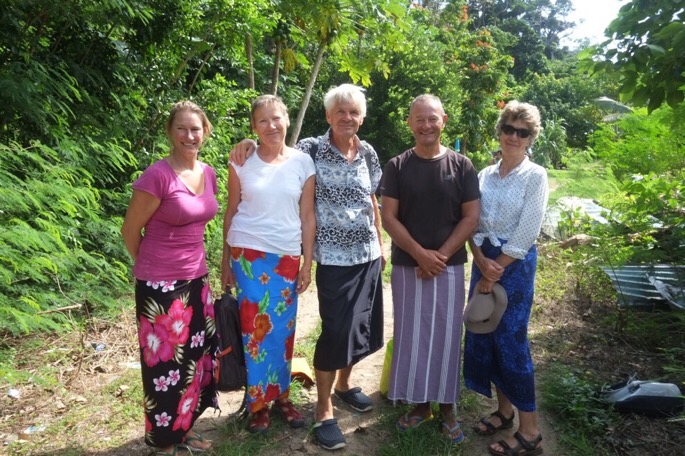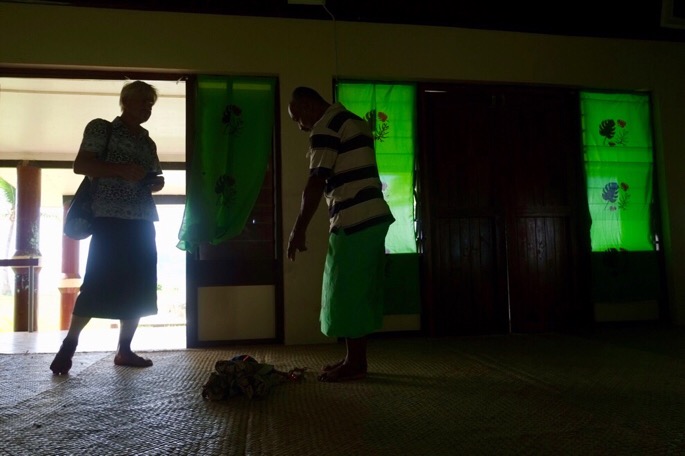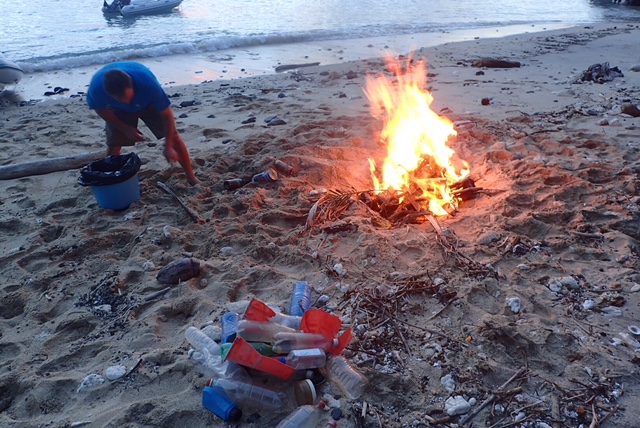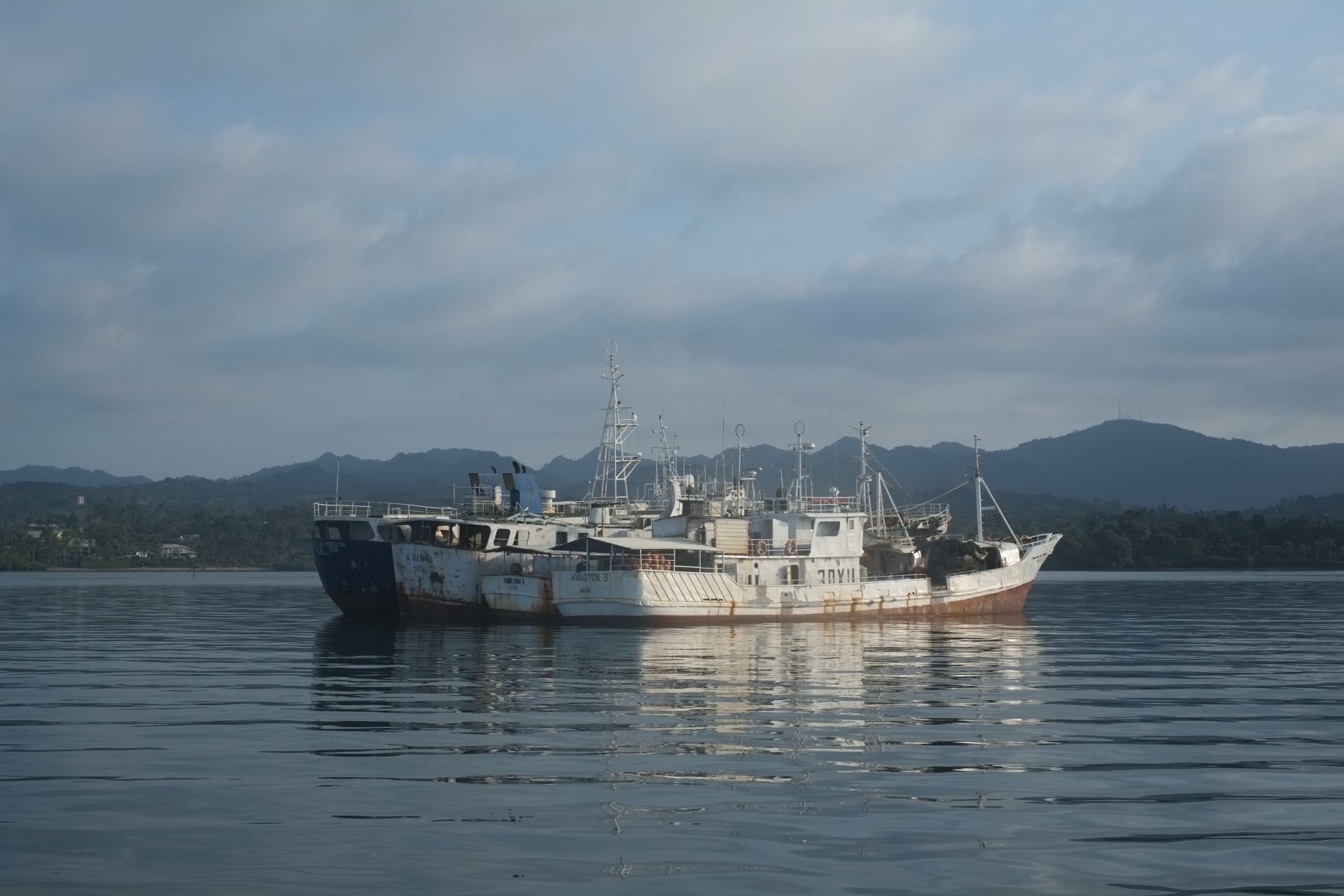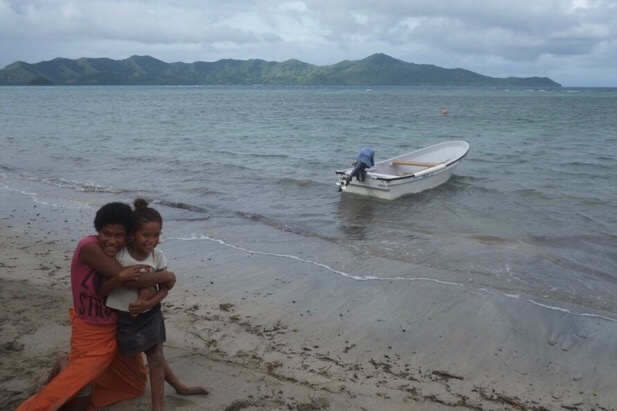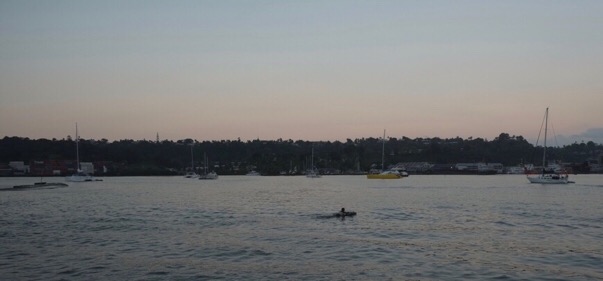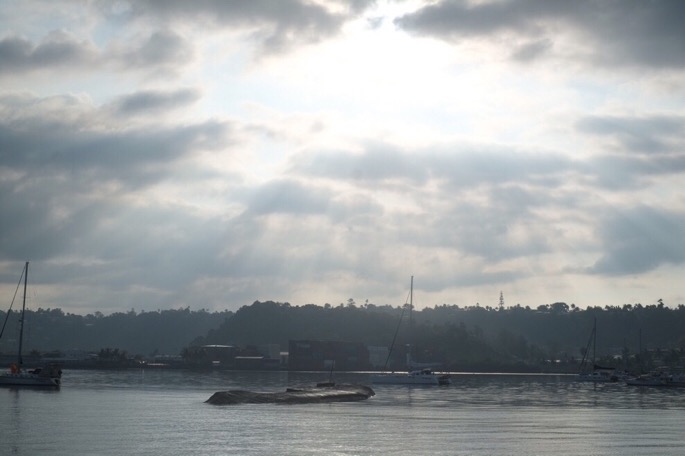Suva

Vega
Hugh and Annie
Mon 23 Jul 2018 22:06
18:07.39S 178:25.40E
After a month of village anchorages we are now in Suva, the capital, on the island of Viti Levu. It is a bit of a culture shock being in a busy port and seeming HQ of the Chinese Pacific fishing fleet. There are rusty trawlers on moorings all around and more ashore under repair. Every time we go up on deck to take photographs the Chinese crew on the nearby boats wave back. You wouldn’t want to swim in the murky water and anchoring has to be planned to avoid one of the many semi submerged wrecks that abound.
Even the sea snakes seem to find the water unpalatable. We were picking up Pelle and Ulla from Loupan last night when we noticed a black and white banded snake trying to climb up onto the transom of Loupan. It then successfully climbed onto our dinghy and with four of us on board there was little room for manoeuvre, let alone scope to sit back and take photographs. Faced with one of the worlds most venomous creatures a gentle nudge with the dinghy water pump was called for and then it was back in the murky soup.
To swim in this water you would need to be pretty desperate. Like a Chinese fishing boat crew wanting to get ashore. One swam past us last night with his upper body supported on a sheet of plywood or something with his possessions or dry clothes in a plastic bag. Occasionally a small boat drops by the trawlers but other than that swimming seems to be the only way off.
Ashore is the Royal Suva Yacht Club. It isn’t quite as grand as it sounds but is a popular watering hole for yachties and the food is good. The town centre is a short taxi ride away and the Indian restaurants are apparently really good but sadly we may not have time to try one. We have tracked down on the internet a coconut flesh removing machine (really a huge motorised lemon squeezer) that we said we would see if we could easily get for the island of Matuku. We also made contact with the nephew of the village mayor who lives in Suva and, as luck would have it, his brother is staying in Suva but returning to the village tomorrow. We took a taxi over to the shop Marco Polo to buy the machine and then arranged for the nephew, Onisimo, to come to the yacht club to collect it. It is in quite a large box and so we asked Onisimo’s brother if he was ok getting it back to the island. Oh yes, he said, I will have four of these now as the other villages have sent money and asked me to buy one for them also (!!). We also sent a tin of fibreglass resin for the chief and opted out of looking for an outboard propellor for him, having done enough for him and his village. So far we have also been to a chandlery, an electrical store and the Cost U Less supermarket that in fact cost us far more than practically anywhere else we have ever provisioned!
It might be easy to imagine tropical paradise as dry and sunny. However this dry season time of year can be wet and yesterday it rained all day. The good thing about rain is that it washes the salt off the metalwork and fibreglass and is absorbed by the teak deck planking that otherwise dries and shrinks, leaving the caulking between the planks proud. When we leave the boat in Australia to fly home we will arrange for the decks to be washed down once a week with seawater. This is the traditional method for preserving wooden decks.
Within the Astrolabe Reef on Kadavu we had some wonderful diving and snorkelling. At around 10m the coral colour is stunning if you shine a torch on it - the most wonderful red, blue, purple, green, yellow and white. Unfortunately we have lost the red filter for the GoPro that brings out the colour that otherwise just appears as a drab bluey grey as soon as the sunlight starts to be absorbed below 5m or so. There are lots of anemones with clownfish and we are amazed at the different types of “Nemo ” there are. One snorkelling site was around a cleaning station used by Manta Rays. Here things became really high tech when Barry on Jadean sent up his drone from which you could see the manta and then motor over to the location to snorkel. You can get really close to them and revel in their graceful beauty. Once you have snorkelled with manta other dives can seem a bit tame by comparison. Annie and Barry have located dive operators that will take you on a shark feeding dive so that you can get up close to the little (or large) darlings. I spend my time trying to avoid the likes of Tiger sharks so am less keen to seek them out.
On the sailing front our new top down furler for the cruising chute has seen action at last. We rigged it before leaving Kadavu and, against all reasonable expectation, it unfurled and set easily, wafting us along at 6kts up to Suva before furling perfectly when no longer required. Not a hint of drama, let alone crisis!! Anchoring continues to have its foibles. We have improved the chain twisting problem by reverting to a previous setup and running one of the snubbing lines through a block suspended from the bowsprit. This is the equivalent of a bow roller and holds the snubbing line vertically down to the vertical chain when it isn’t under load. When the wind or current pushes the boat back both snubbing lines take up the strain, in line with the now angled chain. No twists so far. The anchor itself, a Bruce, is sometimes more akin to a dredge than an anchor. Twice now we have raised it to find a large lump of coral perfectly nestled between the flukes. With the anchor suspended on the chain the only way to remove the coral is to lift the anchor onto the deck (only possible if a line is attached to the head of the anchor to grab which in Kadavu it wasn’t) or to lift or tip the coral out of the anchor, which can only be done from the dinghy. Easy to do in calm conditions but if the anchor picks up coral in rough conditions it won’t set and we are likely to drag, with then the problem of removing the coral before re-anchoring.
Once we are anchored we use an anchor alarm app on the ipad to warn us if we drag beyond a pre-set distance from where we have anchored. We can never remember to set the anchor position on the app at the point at which we actually lower the anchor but most apps allow you to estimate and adjust the anchor position subsequently. Some apps allow you just to set a circular zone around the anchor position within which the boat’s position is monitored and your track at anchor is shown. Some are more sophisticated and allow you set a critical sector that you are most concerned about swinging or dragging into. One will even allow you to subscribe to a weather forecast and will display the predicted swing based upon the forecast wind direction! What we have found is that the more functionality an app has the more drain is put on the iPad’s batteries and the more difficult it is to set up the desired configuration to monitor, particularly if the app is also downloading a satellite image from Google Earth on which to show your position. We have tried free apps and paid for apps and after our latest unsuccessful trial of something more sophisticated will stick with a simple (but paid for) circular monitoring zone without using a satellite image to display it on.
